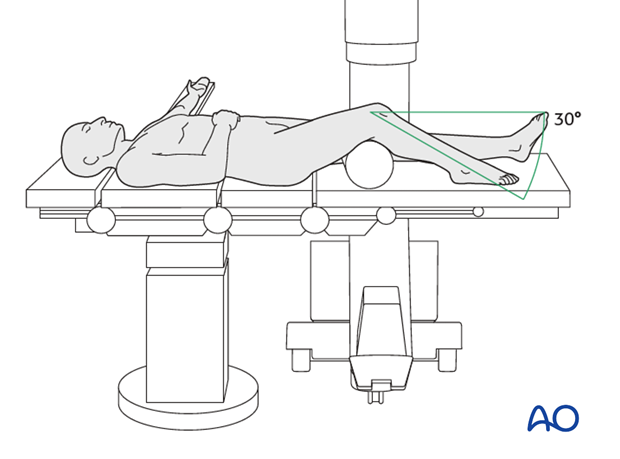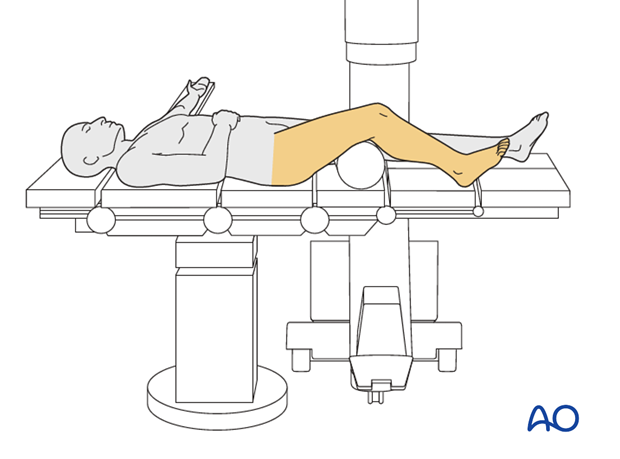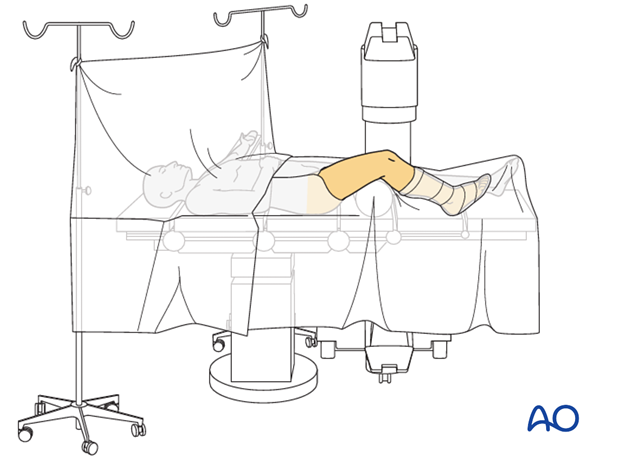Supine knee flexed 30°
1. Introduction
This position is useful for antegrade nailing or retrograde nailing as the ability to obtain AP and latera X-rays is exceptional.
Careful pre-cleaning of the soft tissues should be performed especially if gross contamination occurs.

2. Preoperative preparation
- Site and side of fracture
- Type of operation planned
- Ensure that operative site has been marked by the surgeon
- Condition of the soft tissues (fracture open or closed)
- Implant to be used
- Patient positioning
- Details of the patient (including a signed consent form and appropriate antibiotic and thromboprophylaxis)
- Comorbidities, including allergies
3. Anesthesia
This procedure is performed with the patient under general or regional anesthesia.
If a spinal anesthetic is used, the surgeon and anesthetist need to be confident that the procedure will not last more than 1.5 hours.
Long-lasting postoperative complete pain blocks for the injured leg should be avoided as this could hide symptoms of a subsequent compartment syndrome.
4. Patient and x-ray positioning
- Position the patient supine with roll or well-padded sandbag under the thigh to keep the knee in a 30° flexed position. Alternatively, a carbon triangle may be used.
- Carefully pad all pressure points, especially in the elderly.
- Position the image intensifier on the opposite side of the injury and the surgeon.
- Before preparing and draping, ensure good AP and lateral image intensifier views can be obtained.
- If manual traction is required to reduce the fracture, try to achieve this before preparing and draping the patient.

5. Skin disinfecting and draping
- Maintain light manual traction (the assistant may need to stand on a stool) on the limb during preparation to avoid excessive deformity at the fracture site.
- Disinfect the exposed area from above the iliac crest to the foot with the appropriate antiseptic.

- Drape the limb with a single-use U-drape. A stockinette covers the lower leg and is fixed with a tape. The leg is draped so as to be freely moved.
- Drape the image intensifier.

6. Operating room set-up
- the surgeon and ORP stand on the side of the affected limb.
- The assistant stands next to the surgeon.
- Place the image intensifier on the opposite side of the injury and the display screen in full view of the surgical team and the radiographer.














